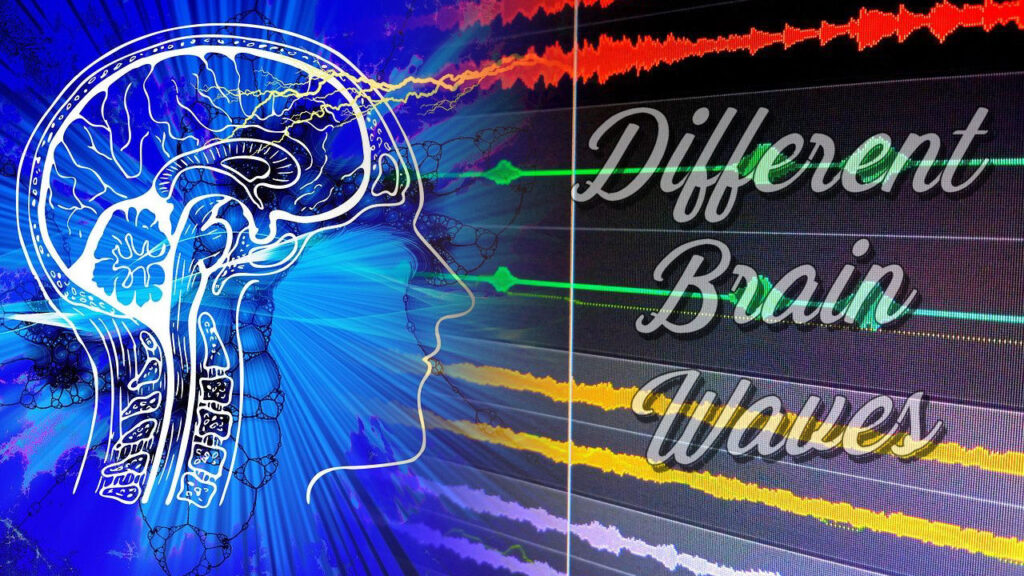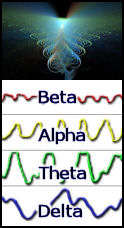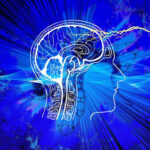
Each one of us has different brain waves or brain states which are referred to as specific frequencies or commonly known as Alpha, Beta, Theta, Delta, and the lesser-known Gamma. This article will briefly cover each state and its specific wave frequency range.
Alpha Brain Wave Frequency (7.5-14Hz)
Alpha brain waves are present in deep relaxation with the eyes usually closed and while daydreaming. The relaxed detached awareness achieved during light meditation is characteristic of Alpha and is optimal for programming your mind for success. Alpha heightens your imagination, visualization, memory, learning, and concentration. It lies at the base of your conscious awareness and is the gateway to your subconscious mind. The renowned Silva Method by Jose Silva is premised on the power of Alpha. The voice of Alpha is your intuition, which becomes clearer and more profound the closer you get to 7.5Hz.
Beta Wave Frequency (14-40Hz)
Beta brain waves are associated with normal waking consciousness and a heightened state of alertness, logic, and critical reasoning. As you go about your daily activities you are at Beta. Although important for effectively functioning in everyday life, higher Beta levels translate into stress, anxiety, and restlessness. With the majority of adults primarily operating at Beta during their waking hours, it is little wonder that stress is today’s most common health problem. The voice of Beta is the little nagging chatterbox of your inner critic, which becomes louder and more relentless the higher you go in the range.
 Theta Waves Frequency (4-7.5Hz)
Theta Waves Frequency (4-7.5Hz)
Theta brain waves are present during deep meditation and light sleep, including the REM dream state. Theta level of mind is the realm of your subconsciousness. It is also known as the twilight state as it is normally only momentarily experienced as you drift off to sleep (from Alpha) and arise from deep sleep (from Delta). A sense of deep spiritual connection and oneness with the Universe can be experienced at Theta. Vivid visualizations, great inspiration, profound creativity, exceptional insight as well as your mind’s most deep-seated programs are all at Theta. The voice of Theta is silent.
Alpha Theta Frequency (7 to 9Hz)
The Alpha-Theta border, from 7 to 8Hz, is the optimal range for visualization, mind programming, and using the creative power of your mind. It is the mental state in which you consciously create your reality. At this frequency of mind control, you are conscious of your surroundings but your body is in deep relaxation.
Delta Waves Frequency (0.5-4Hz)
The Delta frequency is the slowest and is present in deep, dreamless sleep and in very deep, transcendental meditation where awareness is completely detached. Delta is the realm of your unconscious mind. It is the gateway to the Universal mind and the collective unconscious whereby information received is otherwise unavailable at the conscious level. Delta is associated with deep healing and regeneration, underlining the importance of deep sleep to the healing process.
Gamma Waves Frequency (above 40Hz)
The most recently discovered range is Gamma which is the fastest in frequency at above 40Hz (some researchers do not distinguish Beta from Gamma waves). Although little is known about this state of mind, initial research shows Gamma waves are associated with bursts of insight and high-level information processing.

| Bibliography |
| Atwater, F.H. (1997). The Hemi-Sync process. http://www.MonroeInstitute.org/research/ |
| Foster, D. S. (1990). EEG and subjective correlates of alpha frequency binaural beat stimulation combined with alpha biofeedback. Hemi-Sync Journal, VIII (2), pp. 1-2. |
| Hiew, C. C. (1995). Hemi-Sync into creativity. Hemi-Sync Journal, XIII (1), pp. 3-5. |
| Hink, R. F., Kodera, K., Yamada, O., Kaga, K., & Suzuki, J. (1980). Binaural interaction of a beating frequency following response. Audiology, 19, pp. 36-43. |
| Kennerly, R. C. (1994). An empirical investigation into the effect of beta frequency binaural beat audio signals on four measures of human memory. (Department of Psychology, West Georgia College, Carrolton, Georgia). |
| Monroe, R. A. (1985). Far Journeys. (New York: Doubleday). |
| Oster, G. (1973). Auditory beats in the brain. Scientific American, 229, pp. 94-102. |
| Rossi, E. L. (1986). Altered states of consciousness in everyday life: The ultradian rhythms. In B. |
| Shannahoff-Khalsa, D. (1991). Lateralized rhythms of the central and autonomic nervous systems. International Journal of Psychophysiology, 11, pp. 225-251. |
| Tart, C. T. (1975). States of Consciousness. pp. 72-73. (New York: E. P. Dutton & Company). |
| Webb, W. B., & Dube, M. G. (1981). Temporal characteristics of sleep. In J. Aschoff (Ed.), Handbook of Behavioral Neurobiology, pp. 510-517. (New York: Plenum Press). |

